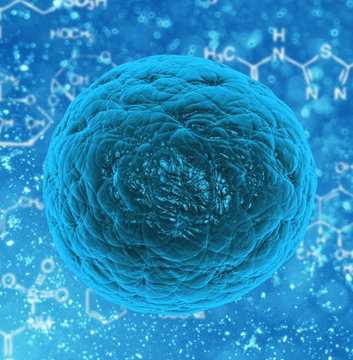
Scientists have successfully developed a revolutionary cancer treatment that lights up and wipes out microscopic cancer cells, in a breakthrough that could enable surgeons to more effectively target and destroy the disease in patients.
A European team of engineers, physicists, neurosurgeons, biologists and immunologists from the UK, Poland and Sweden joined forces to design the new form of photoimmunotherapy.
Experts believe it is destined to become the world’s fifth major cancer treatment after surgery, chemotherapy, radiotherapy and immunotherapy.
The light-activated therapy forces cancer cells to glow in the dark, helping surgeons remove more of the tumours compared with existing techniques – and then kills off remaining cells within minutes once the surgery is complete.
In a world-first trial in mice with glioblastoma, one of the most common and aggressive types of brain cancer, scans revealed the novel treatment lit up even the tiniest cancer cells to help surgeons remove them – and then wiped out those left over.
Trials of the new form of photoimmunotherapy, led by the Institute of Cancer Research, London, also showed the treatment triggered an immune response that could prime the immune system to target cancer cells in future, suggesting it could prevent glioblastoma coming back after surgery. Researchers are now also studying the new treatment for the childhood cancer neuroblastoma.
“Brain cancers like glioblastoma can be hard to treat and, sadly, there are too few treatment options for patients,” the study leader, Dr Gabriela Kramer-Marek, told the Guardian. “Surgery is challenging due to the location of the tumours, and so new ways to see tumour cells to be removed during surgery, and to treat residual cancer cells that remain afterwards, could be of great benefit.”
The ICR’s team leader in preclinical molecular imaging added: “Our study shows that a novel photoimmunotherapy treatment using a combination of a fluorescent marker, affibody protein and near-infrared light can both identify and treat leftover glioblastoma cells in mice. In the future, we hope this approach can be used to treat human glioblastoma and potentially other cancers, too.”
The therapy combines a special fluorescent dye with a cancer-targeting compound. In the trial in mice, the combination was shown to dramatically improve the visibility of cancer cells during surgery and, when later activated by near-infrared light, to trigger an anti-tumour effect.
Scientists from the ICR, Imperial College London, the Medical University of Silesia, Poland, and the Swedish company AffibodyAB believe the novel treatment could help surgeons more easily and effectively remove particularly challenging tumours, such as those in the head and neck.
The joint effort was largely funded by the Cancer Research UK Convergence Science Centre at the ICR and Imperial College London – a partnership that brings together international scientists from engineering, physical and life sciences specialisms to find innovative ways to tackle cancer.
